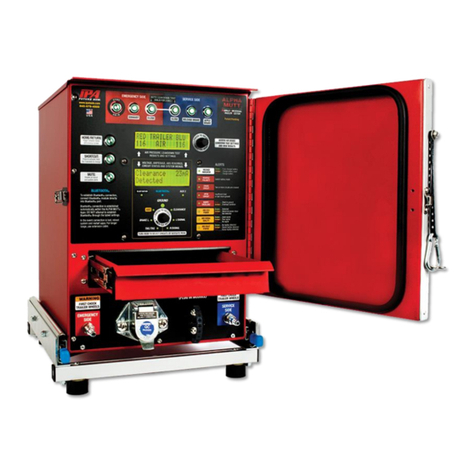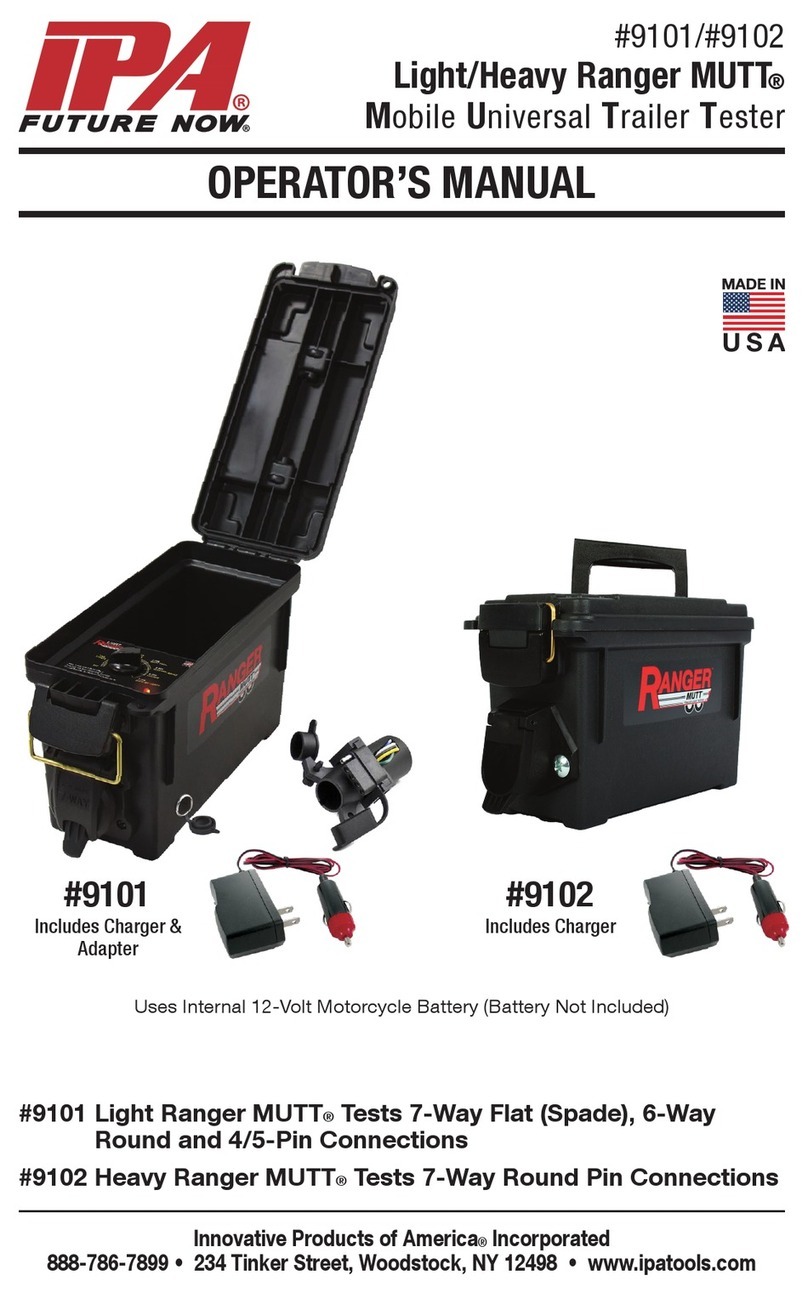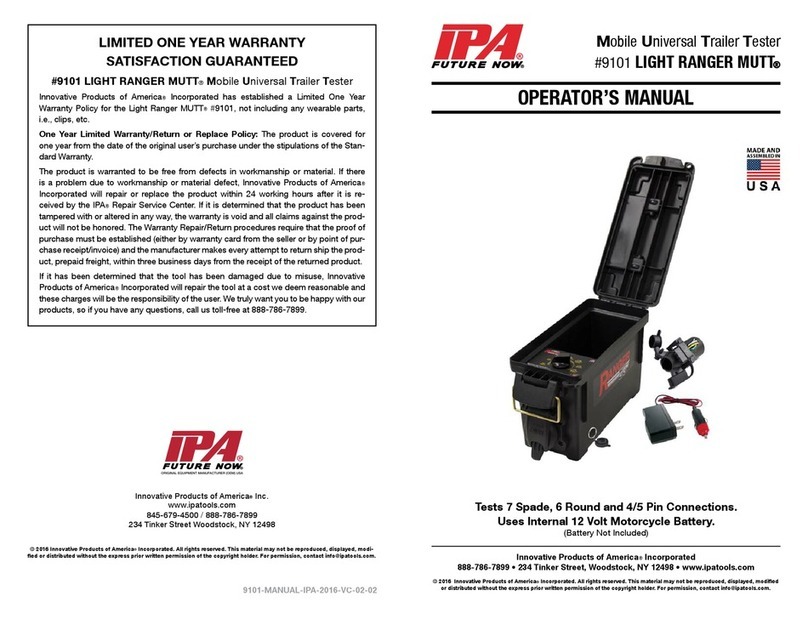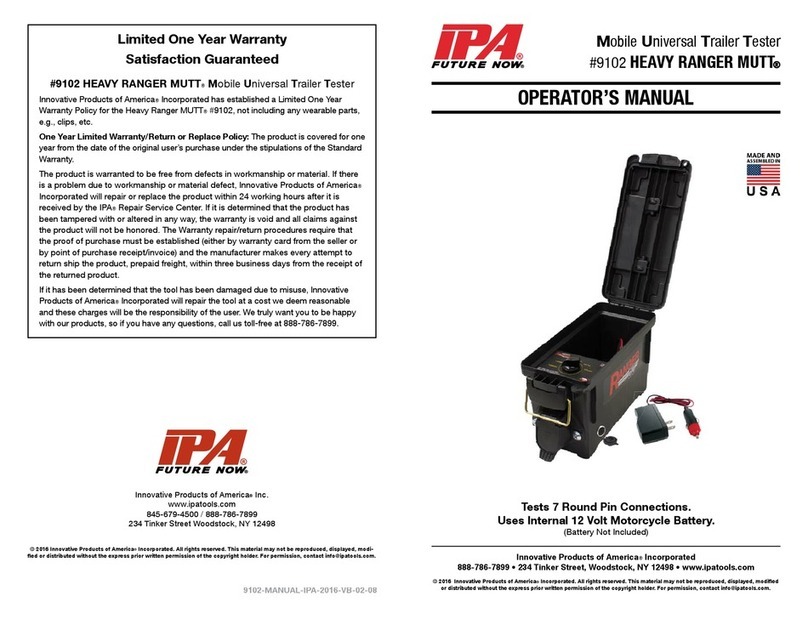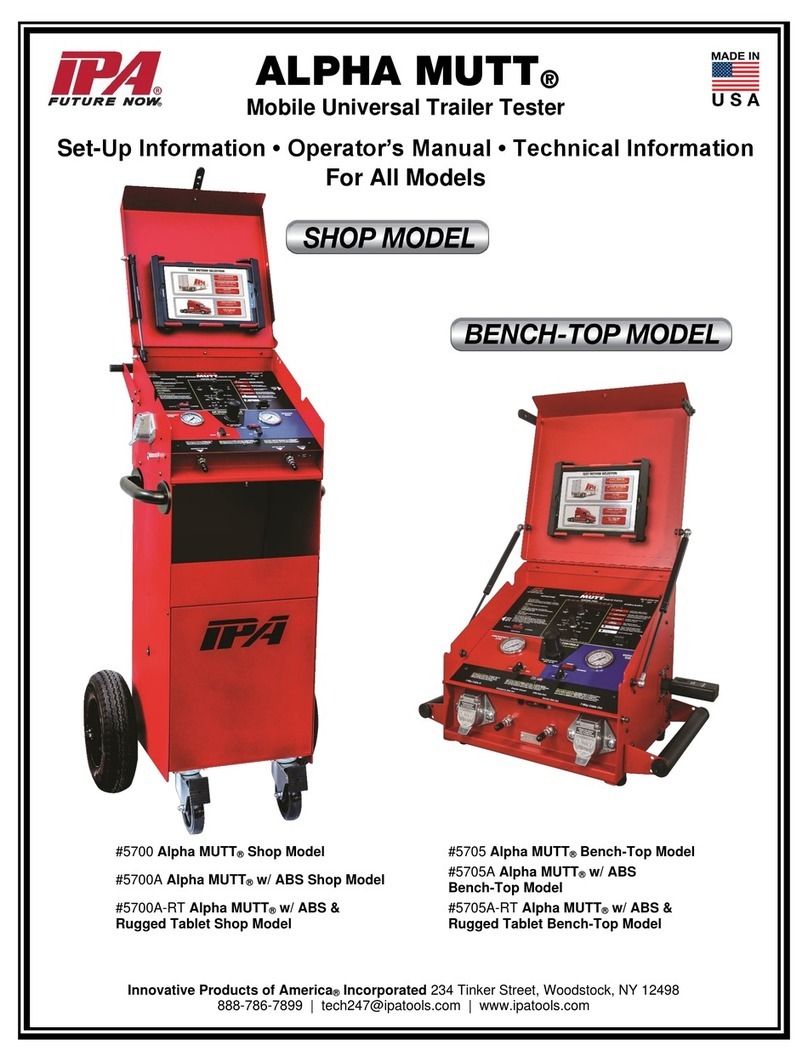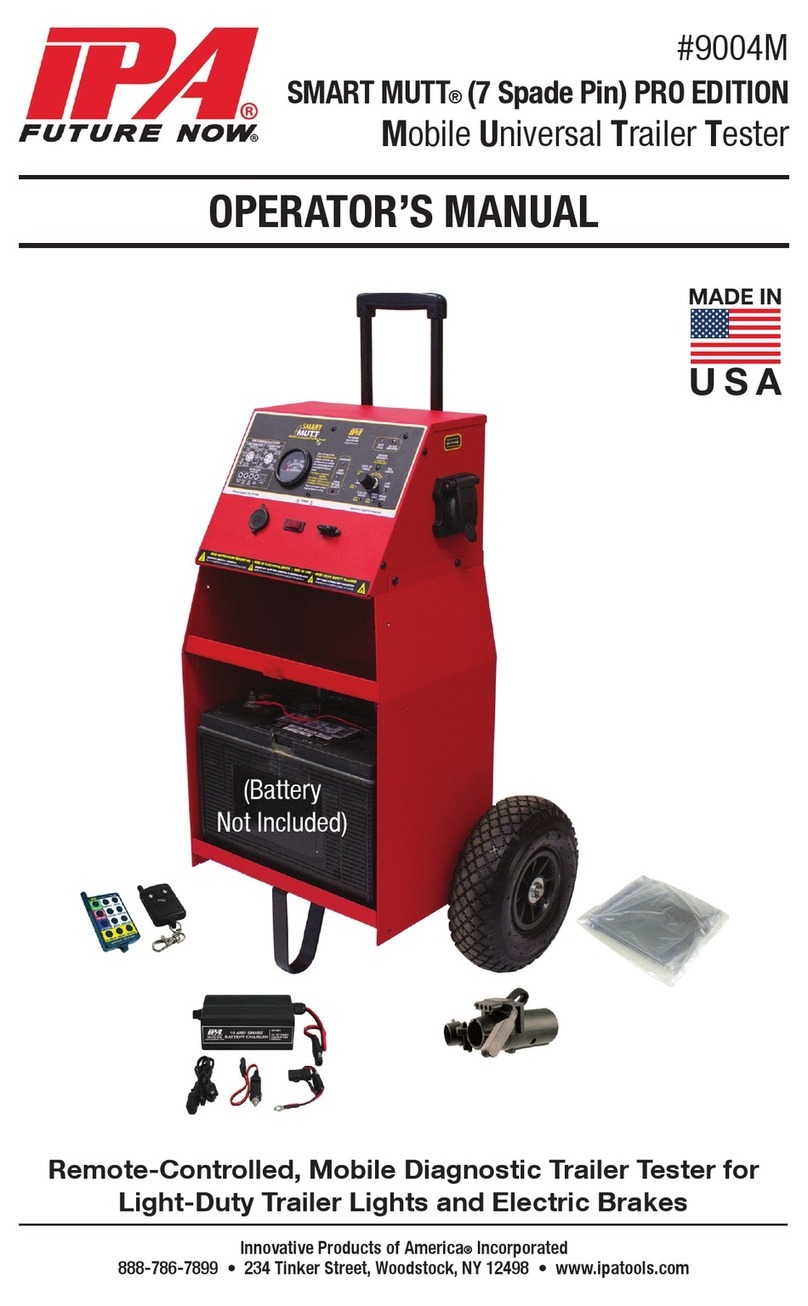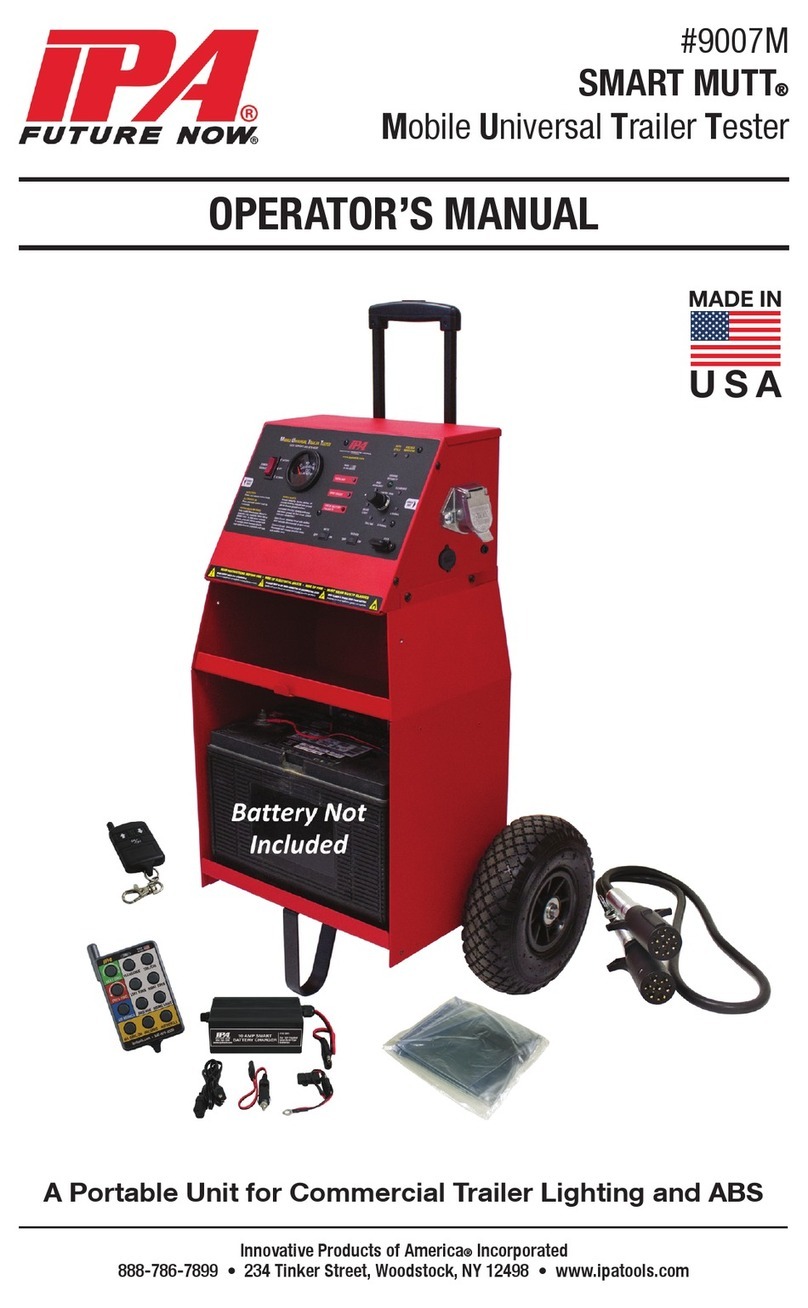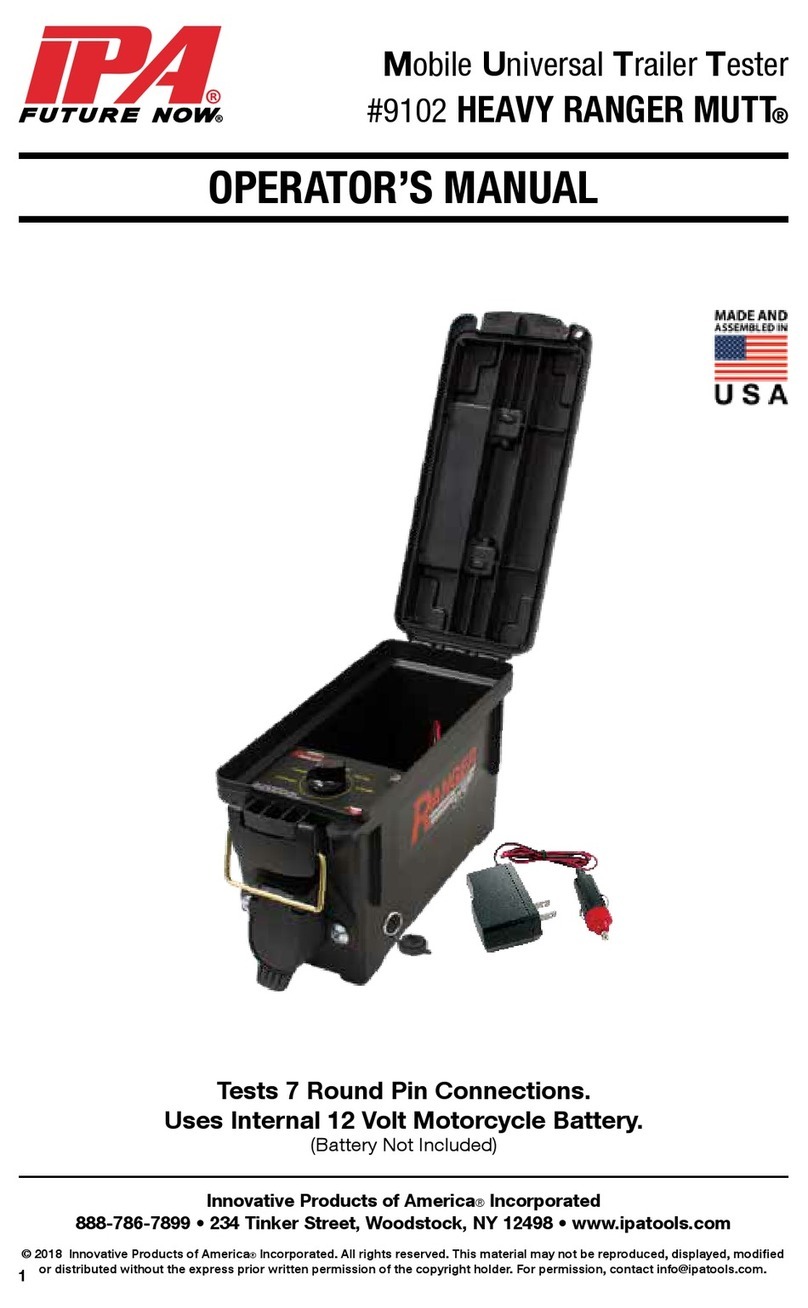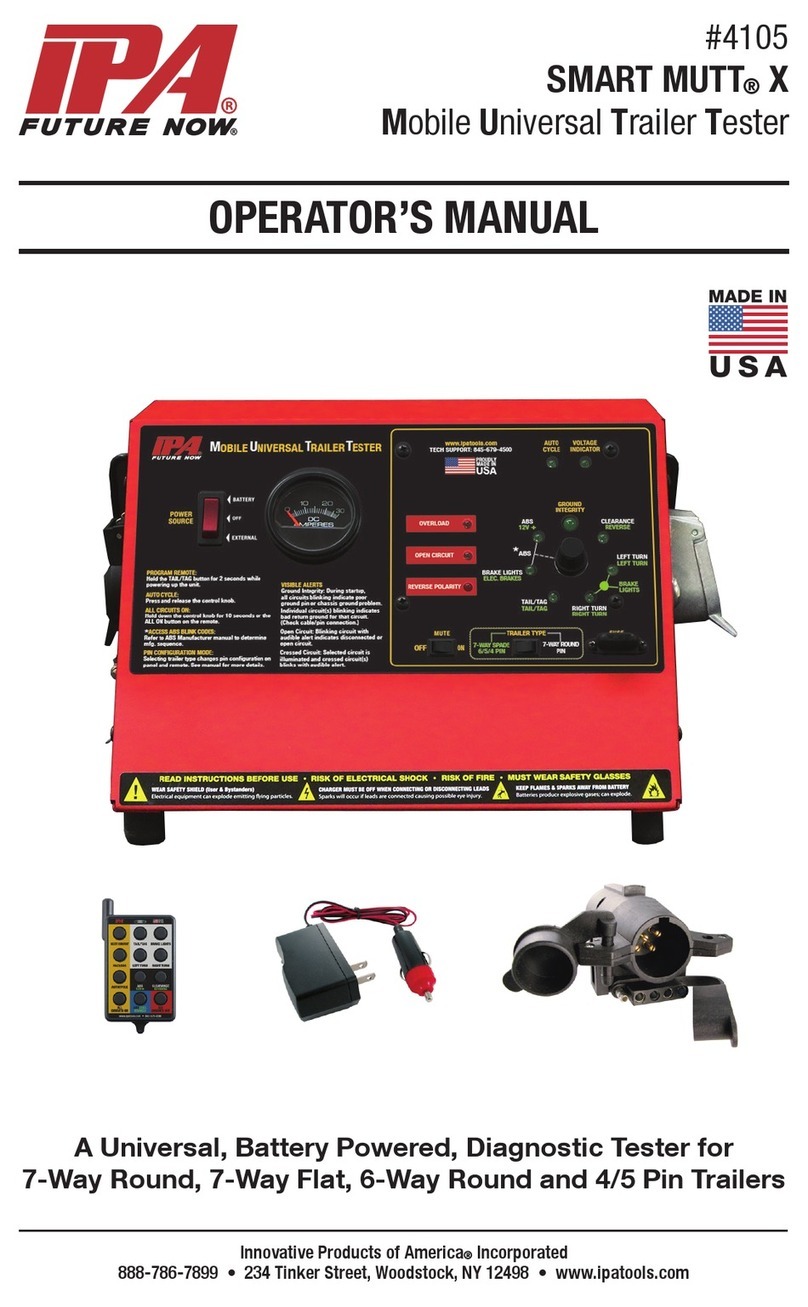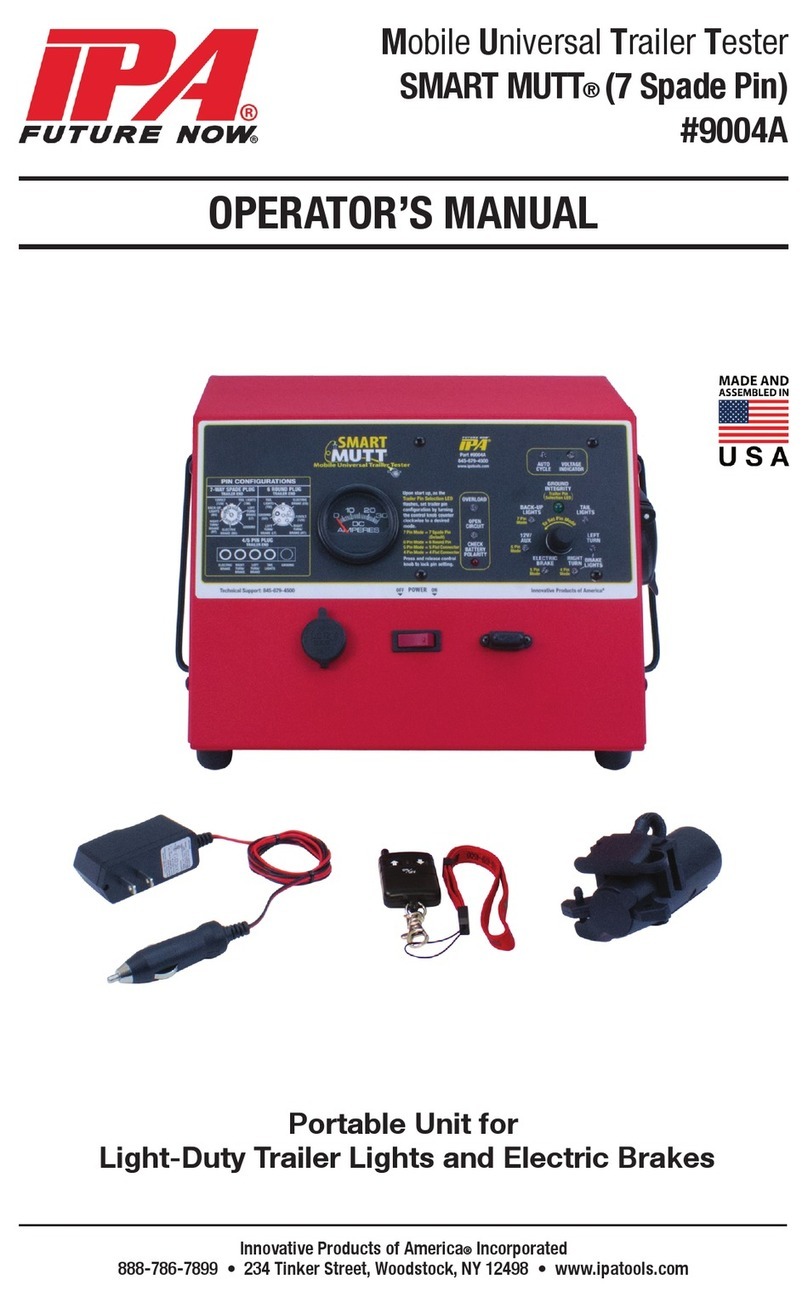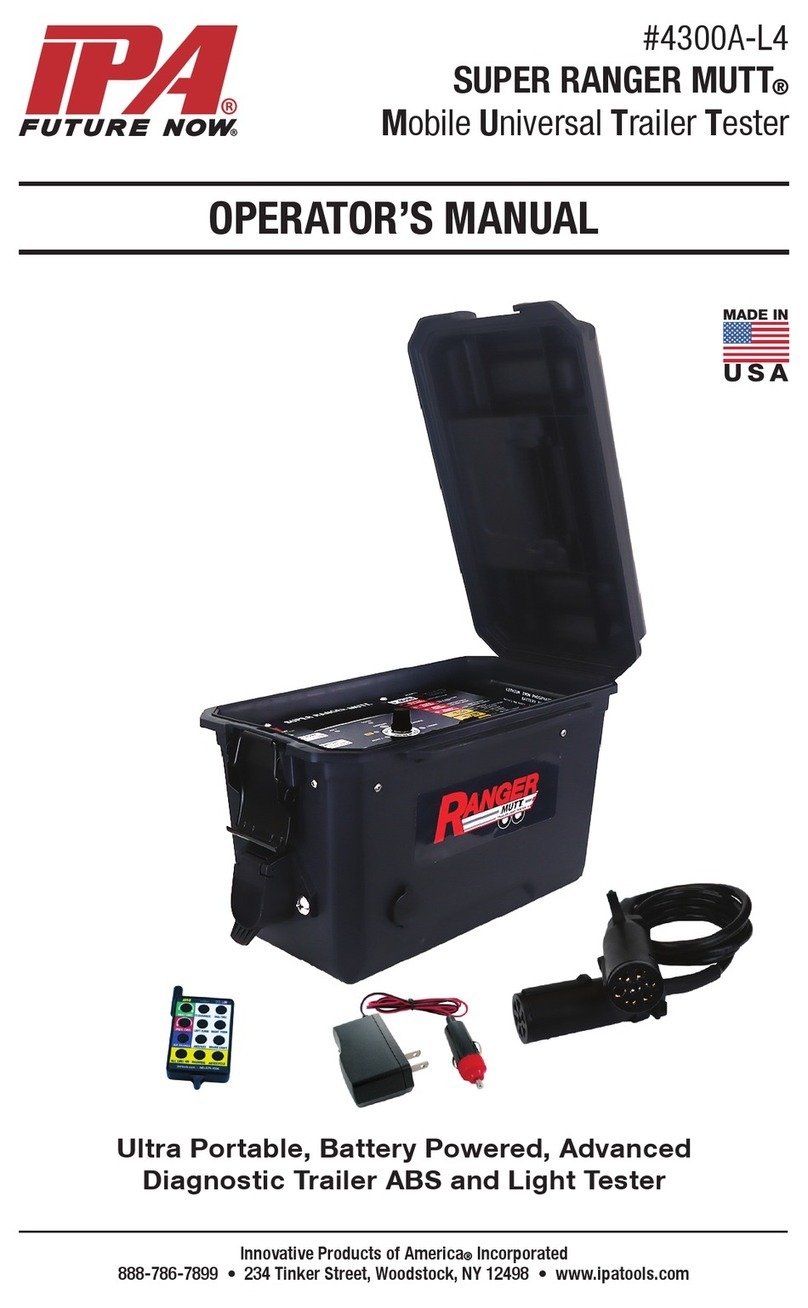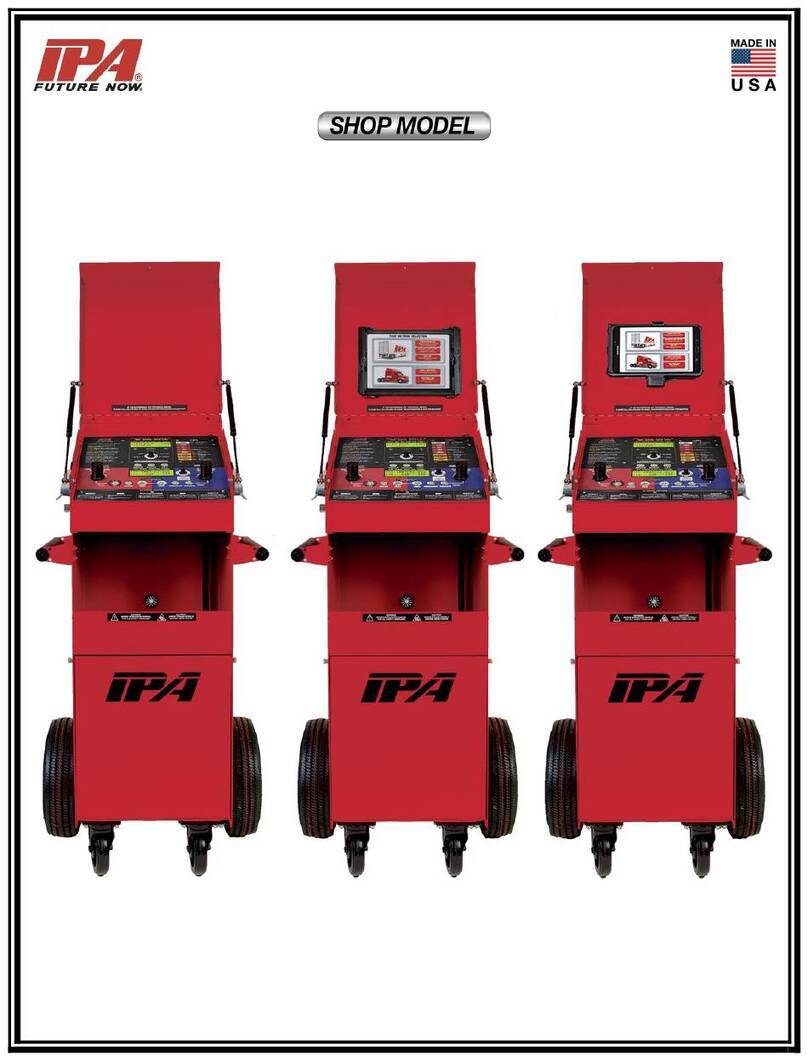
9
3.2 ELECTRICAL CONTROL PANEL
A. POWER SOURCE SWITCH
Select between Internal Battery, External Power or Power Off.
Center: OFF (battery charge in this position only)
Up: Installed Battery ON
Down: External Power ON (power supply is an optional accessory)
B. BACKLIT 30 AMP AMMETER
Meter shows current draw of a selected circuit up to 30 amps.
C. TROUBLE WARNING INDICATORS
Flashing red LEDs indicate problems that may exist in a selected circuit. This includes
the Overload Indicator, Open Circuit Indicator, and Reversed (Battery) Polarity Indicator.
D. MUTE SWITCH
ON disables sound. OFF enables sound.
E. AUTO CYCLE INDICATOR
Illuminates when Auto Cycle Mode is engaged.
F. VOLTAGE INDICATOR
Shows supplied battery voltage integrity. Operating voltage range: 12/24 volt DC.
G. GROUND INTEGRITY
A large green LED above the control knob indicates ground status. Ground
integrity is automatically veried when power is turned on.
H. CONTROL KNOB
Knob activates all electrical test modes and circuits to be diagnosed.
I. CIRCUIT INDICATORS
The small green LEDs illuminate or blink in testing phase.
J. TRAILER TYPE SWITCH
Selecting a mode changes wiring conguration: NATO/7 Spade/6/5/4 Pin,
7-Way Round Pin.
K. 30 AMP FUSE SOCKET
Overload protection.
A
B
D
Electrical Control Panel
PROGRAM REMOTE:
Hold down largebutton on remote while
powering up unit. Releaseafter 5 seconds.
AUTO CYCLE:
Press and releasecontrol knob.
ALL CIRCUITS ON:
Press and hold control knob or remote
for 5 seconds.
*
ACCESS ABS BLINK CODES:
Refer to ABS Manufacturer Manual todetermine
mfg. sequence. Select ABS or BRAKE LIGHT. To
flash power between circuits, press and release
control knob.To maintain power between circuits,
hold control knob for3seconds until beep.
M
OBILE
U
NIVERSAL
T
RAILER
T
ESTER
PULL KNOBTO ADJUST
MAX.120 PSI
AIR BRAKECONTROLS
WARNING: CHOCK ALL TRAILER WHEELS
BEFORE APPLYING AIR PRESSURE
OPENCLOSED OPENEXHAUST/
REMOTE
CLOSED
ON
OFF
VISIBLE ALERTS
Ground Integrity: During startup, all
circuits blinking indicate poor ground
pin or chassis ground problem.
Individual circuit(s) blinking indicates
bad return ground for that circuit.
(Check cable/pin connection.)
Open Circuit: Blinking circuit with
audible alert indicates disconnected
or open circuit.
Crossed Circuit: Selected circuit is
illuminated and crossed circuit(s)
blinks with audible alert.
INLET AIR PRESSURE IS DISPLAYED ON
EMERGENCY SIDE GAUGE: To set pressure,
connect shop air, push switch to open,
then adjust regulator knob.
LEAK DOWN TEST (Emergency/Service): To charge system
with air, set switch to open and fill to desired pressure.
Close switch to shut off air flow and note any pressure
drop through needle movement.
BRAKE ACTUATION: Open emergency side switch to release
parking brake. Open service side switch to actuate service
brakes. To operate service brakes with remote, set switch
to exhaust/remote and press small button on remote control.
30 30
1515 0
BRAKE
B/O STOP
ELEC. BRAKE
ABS
REVERSE
NATO/7 SPADE/6/5/4 PIN MODE
7-WAY ROUND PIN MODE
BRAKE
LIGHTS
GROUND
INTEGRITY
TAIL/TAG
B/O RUNNING
AUXILIARY
RIGHT TURN
RIGHT TURN
LEFT TURN
LEFT TURN
CLEARANCE
TAIL LIGHTS
*
ABS
TRAILER TYPE
OFF ON 7-WAY
ROUND PIN
NATO
7 SPADE
6/5/4 PIN
C
F
E
G
H
I
J
K

